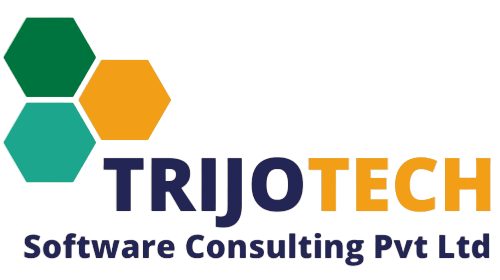
Abstract
Analytics projects are becoming central to organizational strategies. However, these initiatives often fall short of the expectations of CFOs, CIOs, and IT Heads.
This blog delves into the common reasons behind these failures, such as poor execution, inadequate planning, misaligned customer requirements, outdated methodologies, simultaneous S/4 Hana transformations, the absence of advanced analytics tools, and the challenge of selecting the right tools from numerous options.
Through the lens of FMCG Global Company, we explore solutions to these challenges, offering a roadmap to achieving analytics success.
Introduction
In today’s data-driven world, organizations are investing heavily in analytics projects to drive smarter decision-making and gain competitive advantages. Despite these investments, many analytics projects fail to meet the expectations of CXOs, leading to frustration and missed opportunities. This blog investigates the underlying causes of these failures and proposes solutions based on the experiences of FMCG Global Company, a company embarking on its own analytics journey.
The FMCG Global Company Story: Setting the Scene
FMCG Global Company, a thriving company in Techville, embarked on an ambitious analytics project aimed at transforming its decision-making processes. The CEO, Ms. Smith, envisioned leveraging analytics to uncover new opportunities and streamline operations. However, the path to achieving this vision was riddled with challenges that many organizations face today.
Problem 1: Poor Execution

Analysis: Execution is often the Achilles’ heel of analytics projects. Despite well-intentioned plans, teams frequently struggle with integrating new tools and methodologies, leading to delays and stakeholder frustration.
Case Study: FMCG Global Company: At FMCG global company, the analytics team faced significant execution issues. They lacked a clear strategy for integrating various tools, resulting in missed deadlines and inefficiencies.
Solution: FMCG Global Company addressed this by bringing in a seasoned project manager with agile methodology experience. By breaking the project into manageable sprints and focusing on continuous improvement, they established clear communication channels and improved execution. Regular retrospectives helped identify bottlenecks early and fostered a culture of transparency and accountability.
Problem 2: Inadequate Planning

Analysis: Many analytics projects suffer from inadequate planning, with overly optimistic timelines and scattered resource allocation. This lack of detailed planning often derails projects early on.
Case Study: FMCG global company: FMCG global company initial planning was akin to setting out on a road trip without a map. The absence of a detailed roadmap led to confusion and wasted efforts.
Solution: Ms. Smith convened strategic planning sessions to create a detailed project plan. This plan outlined each phase, milestone, and deliverable, including buffer times for unexpected delays and clearly defined roles and responsibilities. The introduction of a project management tool improved resource tracking and ensured that all team members were aligned with the project’s objectives.
Problem 3: Misaligned Customer Requirements

Analysis: A significant issue in analytics projects is the misalignment between CXO expectations and what is delivered. Vague or rigid requirements often result in a product that does not meet organizational needs.
Case Study: FMCG global company: At FMCG global company, the team worked on assumptions rather than concrete customer requirements, leading to a mismatch between expectations and deliverables.
Solution: Regular meetings with key stakeholders were instituted to gather feedback and adjust the project scope accordingly. Design thinking workshops were utilized to better understand user needs, ensuring that the final product was tailored to meet those requirements. This iterative approach enabled the team to pivot quickly in response to changing business demands.
Problem 4: Outdated Methodologies

Analysis: Many organizations still cling to outdated methodologies, such as the waterfall ASAP approach, which is slow to adapt and often leads to significant setbacks when requirements change mid-project.
Case Study: FMCG global company: FMCG global company Systems Integrators were using the outdated waterfall methodology, stifling innovation and responsiveness, and causing delays and increased costs.
Solution: FMCG global company transitioned to an agile approach, promoting flexibility and responsiveness. By embracing iterative development and continuous feedback loops, the team could adapt quickly to changing requirements and deliver incremental value faster. The adoption of agile practices also improved cross-functional collaboration and stakeholder engagement.
Problem 5: Lack of Real Data

Analysis: Starting the analytics project concurrently with the S/4 Hana transformation often means working with imaginary data, leading to inaccurate insights and misguided decisions.
Case Study: FMCG global company: FMCG global company analytics project was based on assumptions and projections due to the concurrent S/4 Hana transformation, undermining its credibility and effectiveness.
Solution: Ms. Smith adjusted the project timeline to allow the S/4 Hana transformation to stabilize and produce reliable data before diving deep into the analytics project. This phased approach ensured that the analytics initiatives were grounded in reality, not imagination. As a result, FMCG global company could deliver actionable insights that aligned with the organization’s strategic goals.
Problem 6: Absence of Advanced Analytics Tools
Analysis: The lack of advanced analytics tools, such as generative AI and prompt-based reporting, can hinder the effectiveness of analytics projects.
Case Study: FMCG Global Company: FMCG global company realized they were missing out on the latest advancements in analytics technology, limiting their ability to provide real-time insights and predictive analytics.
Solution: Ms. Smith invested in cutting-edge analytics platforms that leveraged AI and machine learning. They integrated prompt-based reporting and dashboard capabilities, enabling real-time data visualization and more accurate predictions. This technology infusion empowered FMCG global companies to make data-driven decisions more efficiently.
Problem 7: One-Size-Fits-All Approach

Analysis: A one-size-fits-all approach to analytics often results in suboptimal outcomes. Different industries and organizations have unique requirements, and what works for one might not work for another.
Case Study: FMCG Global Company: Applying a generic analytics solution to diverse industries led to suboptimal outcomes for FMCG global company. Each sector has distinct data needs, regulatory requirements, and business processes.
Solution: Ms. Smith recognized the importance of tailoring analytics solutions to the specific needs of each industry. Thorough research and collaboration with industry experts helped develop customized analytics frameworks, ensuring that the solutions were relevant, effective, and aligned with the unique challenges and opportunities of each sector. This tailored approach enabled the FMCG global company to deliver maximum value to its clients.
Problem 8: Tool Overload

Analysis: With so many analytics tools available, finding the right fit can be overwhelming, leading to analysis paralysis and suboptimal tool selection.
Case Study: FMCG Global Company: FMCG global company grappled with this challenge, trying to decide between SAP Analytics Cloud, SAP BI/BW, SAP Datasphere, and SAP BusinessObjects.
Solution: Ms. Smith led a thorough evaluation process, assessing each tool’s capabilities, compatibility with existing systems, and alignment with specific needs. Pilot projects were conducted to test the tools in real-world scenarios, ensuring the right mix of tools was selected to deliver the desired outcomes. This strategic approach minimized risk and maximized return on investment.
Conclusion
The key to avoiding the pitfalls of analytics projects lies in embracing modern methodologies, aligning closely with stakeholder needs, leveraging the latest in AI and analytics technology, recognizing that one size does not fit all, and carefully selecting the right tools. By learning from FMCG Global Company’s journey, organizations can navigate the complex landscape of analytics and achieve the transformative results that CXOs dream of.
Similarly, to explore more of our blogs click here.
Moreover, you can check our video blog also – Trijotech
Disclaimer: All the opinions are solely for information purposes and the author doesn’t recommend or reject any tools. It should be done after your own due diligence.

